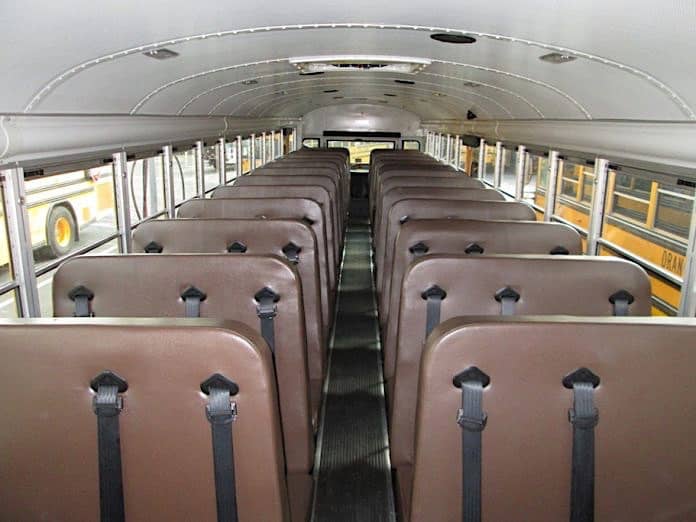With three-point seat belts required on Texas school buses starting on Sept. 1, 2017, some districts are sharing their thoughts and plans on complying with the new requirements.
SB 693, which Gov. Greg Abbot signed into law in June, requires all school buses model-year 2018 or later to have three-point seat belts. Last week, state Sens. Sylvia R. Garcia and Dade Phelan, the bill author and sponsor, sent a letter to the Texas Education Agency and school districts that explained the law and its motivation.
The letter reminded them that buses manufactured before 2018 can be used without seat belts, and retrofitting is not required. If a school district must use model-year 2018 or newer buses without lap-shoulder belts because of budget constraints, school boards must discuss the issue during a public meeting. No extra state funding is provided to districts for purchase the new buses with the occupant restraints.
“Though the Legislature cannot protect children from all the world’s dangers, we do have a responsibility to do our best to prioritize their safety while they are in the state’s care,” stated the letter. “The loss of one child’s life is too many.”
Bill Powell, president of the Texas Association for Pupil Transportation and director of transportation for Cypress-Fairbanks ISD, told STN that there is more to the issue than meets the eye. For instance, Sen. Garcia recommended that districts “reshuffle” their budget dollars to pay the incremental costs of purchasing a three-point, belt-equipped school buses, even if that means reducing the number of new buses purchased. Powell pointed out that this could mean fewer students will be able to ride on the school bus, which is the safest mode of transportation for them.
“I know Sen. Garcia and others have advocated that every child on a school bus should have access to a three-point, lap-shoulder belt. Why is it that they do not advocate that every child has access to ride a school bus?” Powell questioned. “I estimate that over 60 percent of our over 5 million students in Texas are not even afforded a ride to school on a school bus, and I believe now that number will increase.”
Dr. Kayne Smith, senior director of Beaumont ISD’s transportation department, told STN that his district’s voluntary decision to add seat belts to school buses was made in 2006, just after a bus that was carrying the West Brook High School girls’ soccer team to a game rolled into a ditch, killing two students and causing another to lose her arm. It has taken about 10 years to achieve, but Beaumont plans to have 100 percent of its buses equipped with three-point seat belts this year.
Schertz-Cibolo-Universal City ISD’s school trustees already opted out of the seat belt requirements, with Director of Transportation Francisco Perez saying that the district has experienced no major accidents in five years and that the compartmentalization provided by the high-backed, padded school bus seats has been effective in keeping students safe.
This past week in Indiana, a demonstration conducted by IMMI, owner of the SafeGuard brand of school bus seating and restraint equipment, demonstrated the benefit of lap-shoulder seat belts in a crash test involving a semi-truck and a school bus. Several attendees from state school districts that voluntarily implemented three-point seat belts told STN the occupant restraints have greatly improved the on-board behavior of the students and have resulted in fewer distractions and a more pleasant operating experience for their bus drivers.
















